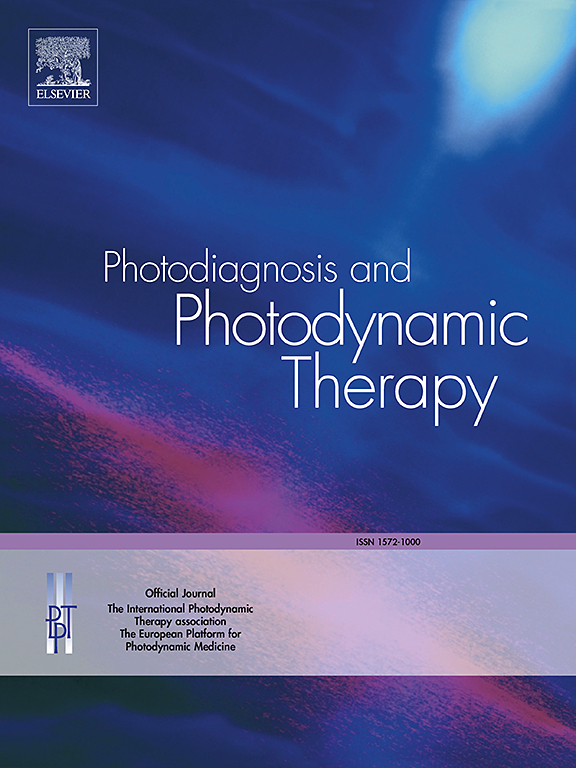Effects on choroid after repeated low-level red-light therapy in preclinical and clinical myopic children: a randomized controlled trial
IF 3.1
3区 医学
Q2 ONCOLOGY
引用次数: 0
Abstract
Purpose
To evaluate how choroidal thickness (CT) and choriocapillaris flow deficit density (CCD) change within 6000 µm of the macula following repeated low-level red-light (RLRL) therapy, and to assess whether early choroidal alterations can predict long-term myopia control.
Methods
This is a secondary analysis of a prospective randomized controlled trial. Two hundred children with spherical equivalent refraction (SER) of -6.00D to +0.50D were randomized to receive either twice-daily RLRL therapy or no additional intervention (control). Axial length (AL), cycloplegic SER, CT, and CCD were measured at the baseline and at 1, 3, 6 and 12 months.
Results
Baseline characteristics were similar between groups. In the RLRL group, subfoveal choroidal thickness (SFCT) increased progressively over time, reaching its maximum at 12 months; by contrast, SFCT declined in controls. Within the 6000 µm macular zone, CT rose in the RLRL group but fell uniformly in the control group. Improvements on choriocapillaris blood flow were evident at 3 months post-RLRL, yet these changes were not sustained and did not correlate with longer-term choroidal thickening. A prediction model using only the “6-month SFCT change” demonstrated comparable accuracy for forecasting satisfactory myopia control at 12 months to more complex multivariable models.
Conclusions
RLRL therapy induces a marked and sustained thickening of the macular choroid within 6000 µm, while its effects on choriocapillaris perfusion are transient. Moreover, the magnitude of SFCT increase at 6 months alone provides a reliable early predictor of 12-month myopia control efficacy.
Trial Registration This trial was registered at the Chinese Clinical Trial Registry on January 30, 2021, with trial registration number: ChiCTR2100042836. https://www.chictr.org.cn/showprojEN.html?proj=120971
反复低强度红光治疗对临床前和临床近视儿童脉络膜的影响:一项随机对照试验。
目的:评价反复低强度红灯(RLRL)治疗后黄斑6000µm范围内脉络膜厚度(CT)和绒毛膜毛细血管血流缺陷密度(CCD)的变化,并评估早期脉络膜改变是否可以预测长期近视的控制。方法:这是一项前瞻性随机对照试验的二次分析。200名球面等效折射(SER)为-6.00D至+0.50D的儿童随机接受每日两次RLRL治疗或无额外干预(对照组)。在基线和1、3、6和12个月时测量轴长(AL)、单眼瘫痪SER、CT和CCD。结果:两组间基线特征相似。在RLRL组,随着时间的推移,中央凹下脉络膜厚度(SFCT)逐渐增加,在12个月时达到最大值;相比之下,对照组SFCT下降。在6000µm黄斑区域内,RLRL组CT升高,对照组CT均匀下降。在rlrl后3个月,绒毛膜毛细血管血流明显改善,但这些变化不能持续,也与长期的脉络膜增厚无关。仅使用“6个月SFCT变化”的预测模型与更复杂的多变量模型相比,在预测12个月时令人满意的近视控制方面具有相当的准确性。结论:RLRL治疗在6000µm范围内诱导黄斑脉络膜显著且持续增厚,而其对绒毛膜毛细血管灌注的影响是短暂的。此外,仅在6个月时,SFCT的增加幅度就提供了12个月近视控制效果的可靠早期预测指标。本试验于2021年1月30日在中国临床试验注册中心注册,试验注册号:ChiCTR2100042836。https://www.chictr.org.cn/showprojEN.html?proj=120971。
本文章由计算机程序翻译,如有差异,请以英文原文为准。
求助全文
约1分钟内获得全文
求助全文
来源期刊

Photodiagnosis and Photodynamic Therapy
ONCOLOGY-
CiteScore
5.80
自引率
24.20%
发文量
509
审稿时长
50 days
期刊介绍:
Photodiagnosis and Photodynamic Therapy is an international journal for the dissemination of scientific knowledge and clinical developments of Photodiagnosis and Photodynamic Therapy in all medical specialties. The journal publishes original articles, review articles, case presentations, "how-to-do-it" articles, Letters to the Editor, short communications and relevant images with short descriptions. All submitted material is subject to a strict peer-review process.
 求助内容:
求助内容: 应助结果提醒方式:
应助结果提醒方式:


